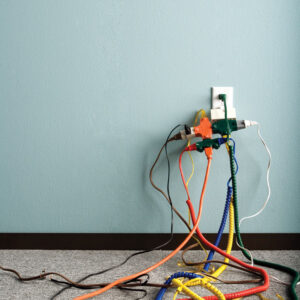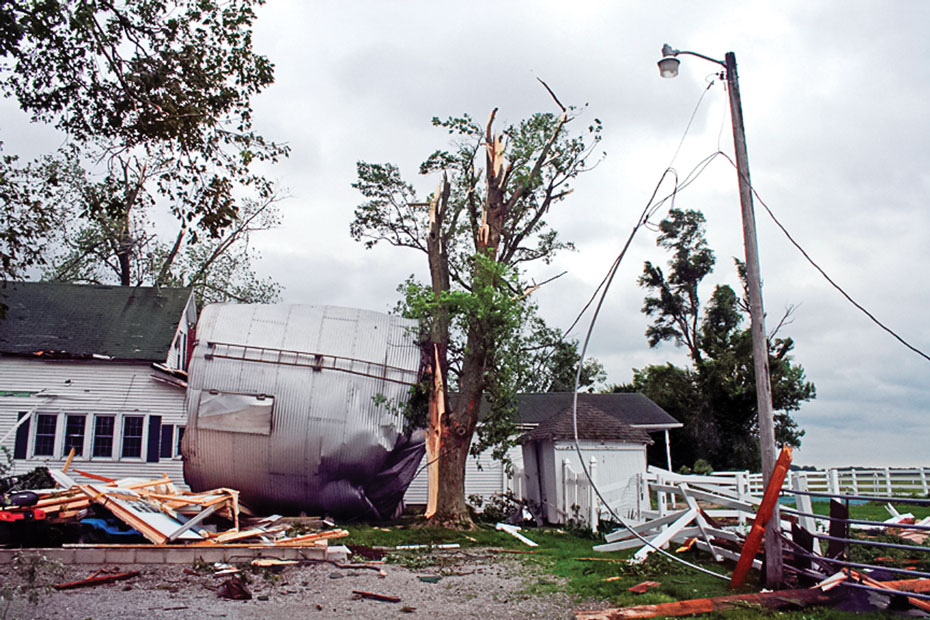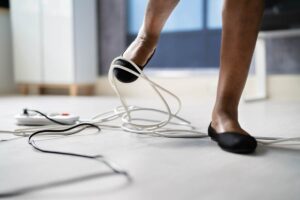Electric energy use is typically on the rise during warmer weather, so as part of the new “Teach Learn Care” TLC campaign, Safe Electricity suggests “there is no time like the present” to conduct an electrical home inspection. The program encourages everyone to make sure your home is safe from electrical hazards to prevent electrical-related deaths, injuries and property damage.
 According to the U.S. Consumer Product Safety Commission (CPSC), faulty home electrical wiring is responsible for 40,000 fires a year and results in the loss of 350 lives, thousands of injuries from electrical shocks and burns and more than $2 billion in personal property damage. It’s estimated that more than 50 million homes and buildings have outdated or inadequate electrical wiring.
According to the U.S. Consumer Product Safety Commission (CPSC), faulty home electrical wiring is responsible for 40,000 fires a year and results in the loss of 350 lives, thousands of injuries from electrical shocks and burns and more than $2 billion in personal property damage. It’s estimated that more than 50 million homes and buildings have outdated or inadequate electrical wiring.
“Electrical hazards have a tendency to remain hidden until it’s too late to avoid disaster. Don’t let the small cost of prevention stand in the way of protecting your family and your property,” says Mike Ashenfelter, Sangamon County Electrical Inspector. “There are many things you can inspect on your own to ensure electrical safety in your home.”
Check electrical outlets for loose fitting plugs that can shock or be a fire hazard. Replace missing or broken wall plates so that the inner wiring components are not exposed. If you have young children, make sure safety covers are used on unused outlets and outlets are not overloaded with too many appliance plugs. Consider installing tamper-resistant receptacles which have a built-in shutter system which prevents hairpins and other small objects from being inserted into the outlet.
Check the cords of the appliances in your home as well as the plugs and connectors. Make sure they are not frayed, cracked or damaged, placed under rugs or carpets, resting on furniture, or located in high traffic areas. Do not nail or staple cords to walls, floors or any other objects.
Extension cords should be used on a temporary basis only because they are not intended for use as permanent household wiring. Have additional outlets installed where you need them instead of relying on extension cords and power strips. If you are using extension cords, make sure they have safety closures to protect young children from shock hazards or mouth burn injuries. Never use an indoor extension cord for outdoor use. Use an extension cord specifically for outdoors; they are heavier and less likely to be damaged.
Check your electrical panel to make sure the breakers and fuses are properly rated for the circuit they are protecting. If you do not know what the correct rating is, have a qualified electrician identify and label the correct size to be used. If you are replacing a fuse, make sure you replace it with the same size as the one you are removing.
Check light bulbs and appliances to make sure the wattage matches fixture requirements. Make sure not to replace bulbs with those that have higher wattage than recommended. Additionally, the bulb should be screwed in securely to prevent overheating.
If an appliance repeatedly blows a fuse, trips a circuit breaker or gives you an electrical shock, immediately unplug, repair or replace it.
Check for or install ground fault circuit interrupters (GFCIs). A GFCI is an inexpensive electrical device that shuts off power instantly if there is problem and should be installed in all “wet” areas of the home such as bathrooms, kitchens, and basements. GFCIs should be tested monthly to insure they are working properly. It’s estimated that more than two-thirds of the roughly 300 electrocutions occurring each year in and around the home could be prevented if GFCIs were installed in household branch circuits.
Consider installing arc-fault circuit interrupters (AFCIs) on bedroom circuits, smoke detectors in all bedrooms and in hallways within 15 feet of bedrooms, and at least one smoke detector on every level. Carbon monoxide detectors should also be within 15 feet of each bedroom unit. As always, check with your local electrical inspector if you have questions or concerns.
Inspect all outdoor connections, appliances and tools for frayed cords, broken plugs and cracked or broken housings.








